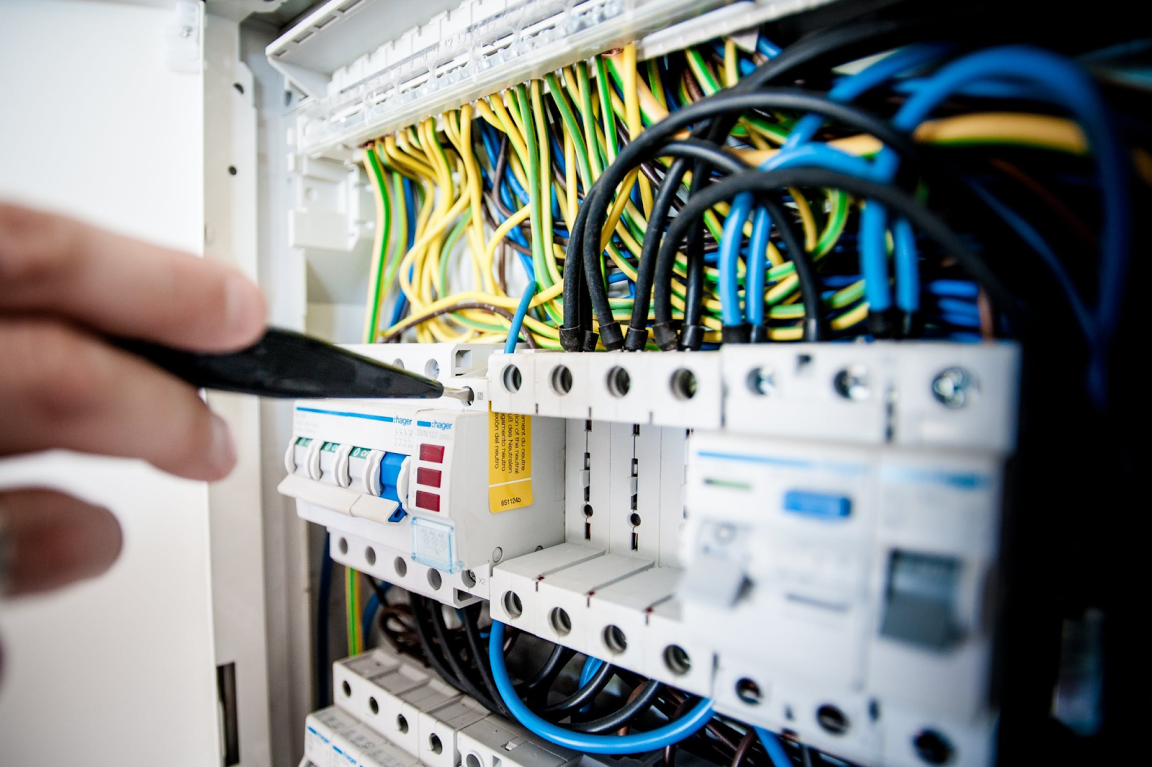The Ultimate Guide to Small Business Internet
Finding the best internet provider shouldn’t be as painful as it is today. In this post, we cover the top decisions you’ll face when buying telecom services.

Nov 16, 2021
SHARE
With the advent of the information age, we’ve seen the birth of SaaS, sophisticated CRM tools, social media, and other pieces of software that have made quality internet access vital to the productivity of a small or medium-sized business. Slow, unresponsive internet can decrease sales / marketing productivity and even lower employee morale, ultimately hitting the bottom line. A good connection has never been more important. Unfortunately, buying internet and related services has not gotten any easier. New network types, tech jargon, emerging providers, and varying contract characteristics can stand to make even an adept IT buyer’s purchase process difficult. Finding the best internet provider and set of related services shouldn’t be a pain.
In this post, we’ll explore some of the biggest considerations you’ll face when buying internet access.
Network Type
All internet connections send and receive packets of information over some type of physical network, and the components underlying your physical last-mile internet infrastructure impact your connection’s speed and reliability. In almost every US municipality, there are anywhere from two to five providers capable of providing business-grade internet access, typically offering business owners multiple network types to choose from. We’ll take a look at a few below:
Cable
What is it? Cable networks are typically built with coaxial cables running from points of consolidation to end users, sending packets of data across these copper wires referred to as coaxial or coax cables.
The good: Cable is ubiquitously available and almost always cheaper than fiber. For businesses without complicated networking or technology needs, a cable connection is typically the easiest option to pursue. Network upgrades have made faster speeds available across cable wires as well.
The bad: Cable connections are shared, best efforts services that pool bandwidth between users, leading to service degradation and low speeds during peak utilization periods. This is why connections can have varied speeds and levels of reliability throughout the day. Copper is also a less efficient medium for transmission than fiber, leading to sometimes lower speeds and service quality over cable connections (as opposed to fiber). Speeds are typically heavily asymmetric, meaning that you’ll get a much higher download speed than upload speed.
Fiber
What is it? Fiber networks look a lot like cable networks, except they deliver packets with electronics that emit pulses of light over fiberglass-based wiring.
The good: Light is a much more efficient medium for signal transmission than electricity, so faster speeds and better quality of service is possible through fiber-optic networks. Symmetric connections and higher uptime are more common with fiber services.
The bad: Fiber networks are less broadly available than cable networks due to the construction costs required to get them up and running. Maintenance for fiber networks is also more expensive, and repairs can take longer. High quality fiber services are typically more expensive than comparable cable or wireless services.
Fixed Wireless
What is it? Fixed wireless networks deliver packets to end users wirelessly over radio waves in a similar fashion to how cellular networks transmit data. They still have wires running from their antennas to consolidation points, but require much less wiring than fiber or cable networks because of limited last-mile wiring needs.
The good: Given that fixed wireless networks don’t need last-mile wires to connect users, they can be built at a lower cost and deliver service more cheaply than wired alternatives. Installations can move much more quickly for wireless networks. In metro areas where fiber is broadly available, high speeds are achievable over wireless networks, and they can present an attractive lower-priced alternative to wired networks in the right circumstances.
The bad: Wireless connectivity speed and quality can degrade with weather or significant utilization. Latency will likely be higher than with fiber or cable. In areas with low density and a lack of fiber infrastructure, wireless speeds will likely be very slow. Building ownership will typically need to approve rooftop antennae for the network to get setup.
Satellite
What is it? Satellite providers send your internet packets to satellites orbiting Earth, that then redirect your packets back to their Earth destination.
The good: Because satellite networks don’t depend on wired infrastructure, they are available everywhere, even in the most rural areas. There is major innovation in satellite-based internet (see SpaceX's Starlink).
The bad: Speeds are very slow (DSL-like) and latency is very high because packets are sent to space and back. Weather and even static objects like mountains can interfere with signal. This is typically only a good option when it’s the only option.
DSL
What is it? DSL is run on copper telephone infrastructure with a direct line to each subscriber.
The good: It’s cheap and available almost everywhere.
The bad: This is 1999’s internet access mode of choice. Speeds are terrible and costs are comparable to cable. Speeds are often asymmetric and distance-sensitive (the further from the central office you are, the slower the connection).
Speed and Service

Certain that you want a fiber or cable service? Got your provider in mind? Now you’ll need to determine your internet speed and service tier requirements to make an informed purchase. See below for some factors to consider when picking a package.
Bandwidth: This is the most often quoted “measurement” of an internet connection’s quality. Bandwidth measures how much data can be transmitted through your internet connection on a per-second basis (typically measured in megabits). If you frequently use high bandwidth applications (video streaming, video conferencing, sending of large files), then you’ll need a high bandwidth connection. You’ll also need to ensure that you have bandwidth to support all of the users on a given network (employees in your office or visitors using your wi-fi network, for example).
Latency: Latency measures how long it takes your transmitted data to reach a server and then come back to you, understood as the time delay between when you click something and when you see it. A fast connection with high latency can still feel like a slow connection, and this is where network type is most important. Fiber and cable have low latency, while satellite has very high latency. Wireless connections can have high or low latency depending on utilization and network architecture. Fiber is typically the best latency option.
Upload vs. Download: Cable connections typically won’t give you the same bandwidth speed when uploading rather than downloading due to how they provision networks. If you’re performing activities that require fast upload speeds (video conferencing, cloud backup, sending files), then you may want to ensure that you have a symmetric connection or adequate upload speed.
How Much Speed Do I Actually Need? Internet speed requirements differ based on activities that the network is used for and number of users on the network. Some quick math can help you understand your needs. To get a reasonable estimate of bandwidth needs for your office, determine whether or not most of your network uses fall into low bandwidth or high bandwidth activities as described below. If primarily low bandwidth, multiply the number of users on the network by 3 for a reasonable estimate of mbps speed needed. If primarily high bandwidth uses, multiply the number of users by 10. You’ll likely find that you need less bandwidth than you may have thought from this exercise, but keep in mind it’s worth having some cushion in the amount of bandwidth you purchase, as incremental bandwidth is cheap and bandwidth consumption increases significantly with time due to new applications, devices, and network uses. Also, note that a cable connection may not actually give you the bandwidth requested during periods of high network demand.
Example Low Bandwidth Activities: Internet browsing, social media usage, email, text chat, small file sharing, music streaming
Example High Bandwidth Activities: Large file downloading / uploading (or cloud backup), video calling, video streaming, online gaming
Other Considerations: Note that bandwidth doesn’t guarantee network uptime, and that most cable connections are “best efforts,” meaning they give you up to the amount of bandwidth quoted, with significant service degradation during times of peak utilization. Also, most cable connections come with asymmetric speeds (fast download but slow upload). If your business has real IT needs and / or lots of users that are focused on productivity, it may make sense to invest in dedicated internet access (DIA) over fiber. DIA, which typically costs a bit more than basic internet access, guarantees the amount of bandwidth purchased nearly 100% of the time, ensuring that you can expect to receive the speed you purchased reliably. It also typically comes with better access to support. If DIA is not available where you are, an alternative option would be to get a redundant (second) internet connection and use a load balancer to optimize traffic across both networks. In some cases this may be cheaper than purchasing DIA.
How to Actually Buy?

Ready to go ahead and buy access for your business? Not so fast, the process can be pretty slow and frustrating. First, you’ll need to determine what providers are available at your address, and then you’ll need to go talk to sales reps and get price quotes to submit a service order. Unfortunately, there is no easy online way to determine what providers are available at a given address, and you may need to talk to other tenants in your building, or your building owner / manager for an idea of who is available locally. Then, you’ll need to call available providers to get price quotes. There’s no guarantee they’ll get you the right products, and they’ll almost never give you the best available pricing.
If this process doesn’t sound fun to you, and you’re not super excited about calling a company like Verizon, we recommend using a telecom agent. Agents work on your behalf to handle the telecom buying process for you - determining which providers are available, gathering you best price quotes, handling contracts, and helping you navigate ancillary purchases (cabling service, hardware, etc.). Best of all, agents are typically free, as they get compensated from providers for what they sell, at no cost to you. Agents are everywhere, but finding a good one is difficult, as they’re regionally focused and you’ll need to find a trustworthy telecom agent with local knowledge to ensure a smooth purchase for yourself. Further, you’ll need to validate that your agent isn’t upselling you unnecessarily or directing you to unfit providers.
Agents don’t always do right by customers, and finding a good one is hard, which is why we started Lightyear. Our product is a fully functional “virtual” IT agent that guarantees best available pricing and lightning speed, with a fully online customer intake. In many instances, we can get you to contract stage without the need for a single phone call, saving you time to focus on more pressing needs for your business. When your contract is up for renewal, we’ll automatically price check for you and ensure you’re getting the best pricing possible. If the buying process outlined above sounds frustrating, give us a try. Our services are completely free :).
Regardless of how you decide to purchase access, we recommend placing an order AT LEAST 60 days before your anticipated activation date to ensure that you have time for potential installation hiccups.
Please email us at [email protected] if you have any questions about the items discussed in this blog post.
Want to learn more about how Lightyear can help you?
Let us show you the product and discuss specifics on how it might be helpful.
Not ready to buy?
Stay up to date on our product, straight to your inbox every month.
